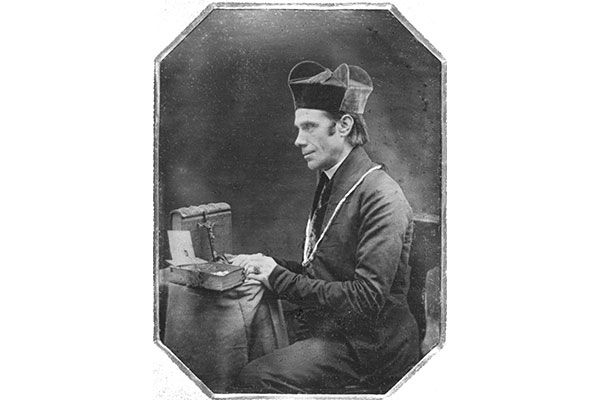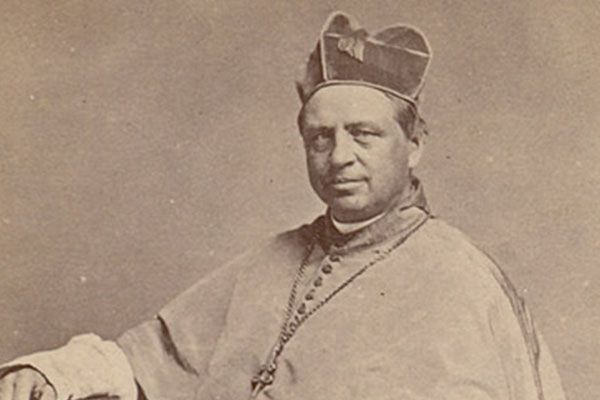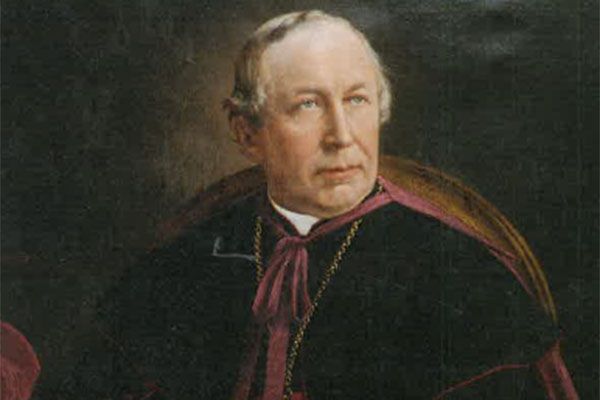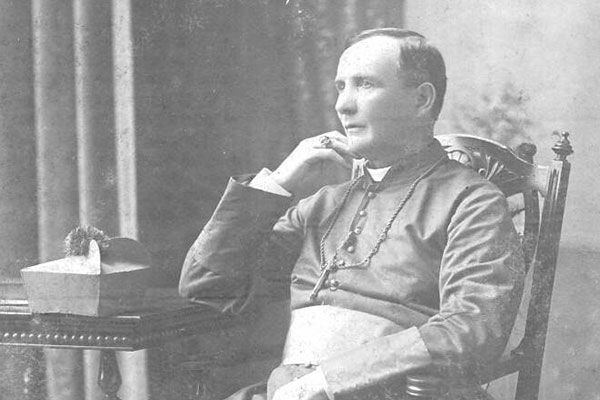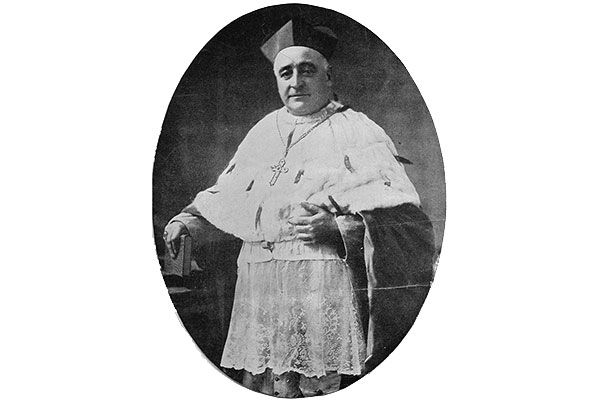Most Rev. Cornelius O’Brien
The First Canadian Archbishop of Halifax
1883-1906
Cornelius O’Brien became the first Canadian-born Archbishop of the Archdiocese of Halifax in 1883. The Royal Society of Canada said “a more unassuming man never filled so high a position.” Cornelius was born in New Glasgow, Prince Edward Island on May 4th, 1843. He was the son of Terrance O’Brien a modest local farmer, and Catherine O’Driscoll an immigrant from County Cork, Ireland. The remarriage of Catherine’s mother led to a rift with her family, and she left Ireland with her daughter and new husband.
As a sickly young man, Cornelius had a deep affinity for poetry and literature.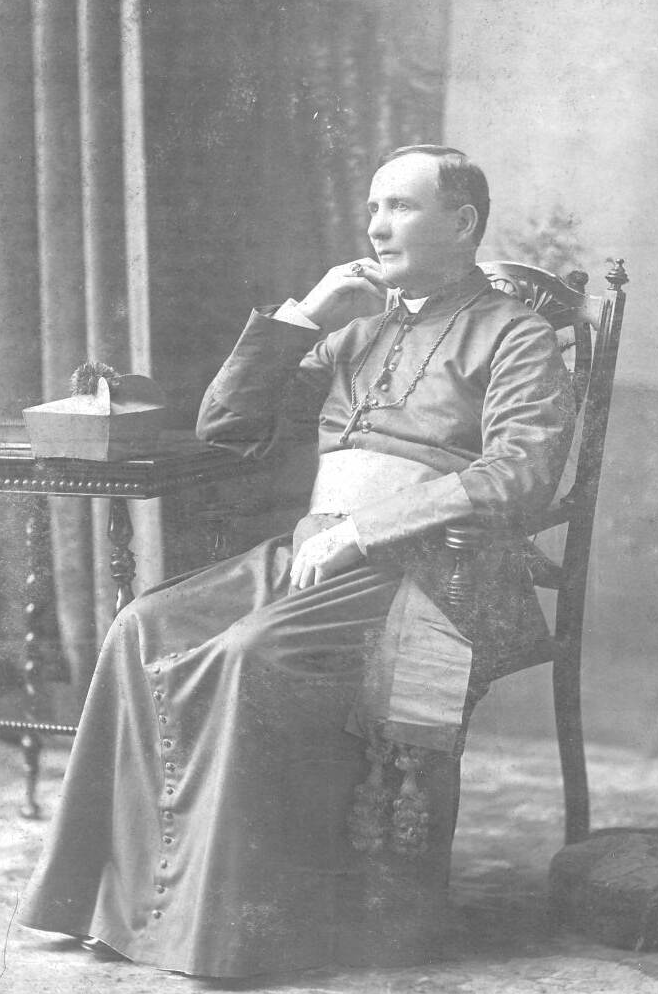
From a young age, he felt called to the vocation of the Priesthood, however, at the age of 16 he decided to pursue business. He joined a local commercial house in the nearby town of Summerside, P.E.I where he spent the next two years of his life. After his brief stint in the business world, the young future bishop enrolled at St. Dunstan’s College in Charlottetown in 1864, and it was here that his talents were noticed by the local Bishop the Most Rev. Peter McIntyre. The Bishop soon invited O’Brien to study theology and philosophy at Urban College in Rome, where he spent the next 7 years of his life. O’Brien showed tremendous fortitude while studying in Rome. During his studies, he became terribly ill and dreamt of returning home many times, yet he persisted. He graduated with both a Doctor of Philosophy Degree and a Doctor of Divinity Degree in 1871. In April of 1871, his dream of becoming a Priest finally came to fruition when he was ordained to the Priesthood at the Basilica of St. John Lateran in Rome. Fr. O’Brien returned to Rome a few more times during his life and even accompanied Bishop Michael Hannan, the man whom he would eventually succeed, on one voyage to the Holy See.
Fr. O’Brien returned home to teach at St. Dunstan's College for a few years and even served as the Rector of the College. He also served as the principal Priest at the Charlottetown Cathedral for a brief period before becoming painfully ill again. After consultation with Bishop McIntyre, Fr. O’Brien moved to a rural parish in Indian River, PEI, and humbly served there for 6 years. During this time, he regained his health and even officially adopted his niece Cornelia Hughes from his sister when she and her husband were unable to provide for the child. In 1882 it was officially announced that he would succeed the late Archbishop Hannan as Archbishop of Halifax, the first Canadian-born bishop in the history of the Archdiocese. He was consecrated as Archbishop of Halifax on the feast day of St. Agnes January 21st, 1883, at St. Mary’s Cathedral in Halifax. This date was well chosen, as Archbishop O’Brien had a deep spiritual admiration for St. Agnes. She was often the topic of his poetry and was later the subject of one of his many published books; St. Agnes, Virgin, and Martyr in 1887, the same year that he laid the cornerstone of Saint Agnes Church on Mumford Rd, Halifax, NS.
During Archbishop O’Brien’s life, he published many novels, philosophical essays, and poems including Memoirs of Bishop Edmund Burke (1894), St. Agnes, Virgin and Martyr (1887) and Cabot’s Landfall and Chart Some Criticisms Answered (1899). His poetry was even published by the Halifax newspaper The Critic on occasion. In 1896 he was elected President of the Royal Society of Canada, whose members “have made remarkable contributions in the arts, the humanities and the sciences.”
The Archbishop’s passion for literature fueled his concern for education. During his Episcopacy, he oversaw the creation and development of academic institutions such as College St. Anne, established in Church Point, NS in 1891, the first Acadian university in the province. It was named for St. Anne, the patroness of Brittany, due to the help received by the Eudist Priests from Brittany, France, in the formation of the college. The Eudists also taught at Holy Heart Seminary, established in Halifax in 1895 under Archbishop O’Brien.
In 1881, the provincial government canceled the grant for St Mary’s University resulting in the temporary closure of the university which had been in operation since 1802 and granting accredited degrees since 1841. Patrick Power, a wealthy MP, and Catholic merchant left a considerable fund after he passed away in February of 1881, to bring Jesuit priests to the university to teach. When Archbishop O’Brien’s episcopacy began in 1883, he tried to honour Power’s wish but an unfortunate disagreement with the order during the negotiation process resulted in the abandonment of the plan. Lawrence Geoffrey Power, Patrick’s son, would not allow the money to be used unless the Jesuits were to instruct at the university. The case was brought to the Superior Nova Scotia court, which sided with the Archdiocese. However, in 1903 an appeal to the Supreme Court of Canada led to a reversal of the decision and the withdrawal of the funds to the university. Archbishop O’Brien however, still managed to reopen the university that year without the Jesuits or the support of the Power estate, and the instruction was largely done by laymen.
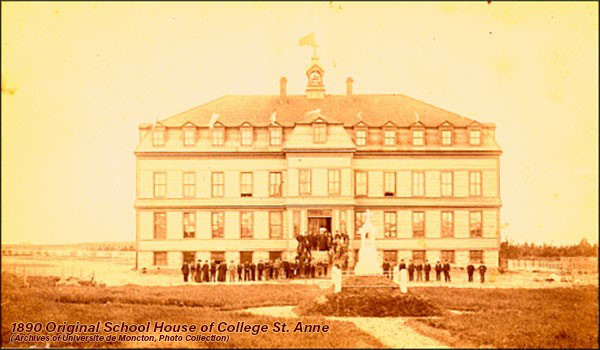
Archbishop Cornelius O’Brien was heavily involved in political affairs and was accused of being a staunch conservative partisan by critics such as Nova Scotia Premier W.S. Fielding and Senator Lawrence Geoffrey Power, both members of the Liberal Party. A letter from 1896 addressed to the Archbishop from Sir. Charles Tupper clearly showcases the Archbishop’s support for the Conservative party. It was well-known to many that the Archbishop opposed the Liberal policy of reciprocity and preferred John A. MacDonald’s national policy.
Archbishop O’Brien was involved in many political debates, perhaps most importantly over the issue of minority Catholic education rights. In 1890 the Manitoba Legislature under Premier Thomas Greenway passed a bill removing the right to publicly funded Catholic and French education in the province contravening both the 1870 Manitoba Act and the Canadian Constitution Act of 1867. Prime Minister Sir. Wilfred Laurier, despite his Catholic upbringing, failed to intervene. Many of the Canadian Bishops rallied together and the Bishop of St. Boniface, Manitoba often wrote to Archbishop O’Brien, updating him on the situation. The Manitoba Schools Question gained international attention with Pope Leo XIII issuing his Papal encyclical Affair Vos in 1897 addressing the issue of Catholic education in Canada. Similar problems persisted in Nova Scotia over issues of funding for Catholic institutions such as orphanages and the Halifax school for the deaf and dumb. Both Archbishop Cornelius O’Brien as well as the Bishop of Antigonish John Cameron perceived a hostility in Liberal governments towards Catholic education and other institutions. They made public statements urging the Nova Scotia faithful to vote against Liberal candidates causing controversy among many Catholics and non-Catholics in Nova Scotia, and leading to a series of heated letters between the Liberal and Protestant Premier W.S. Fielding and the Archbishop of Halifax.
 The Archbishop forged close friendships with Prime Minister Sir. Charles Tupper and MP Thomas Edward Kenny. He had the privilege of conducting the requiem mass at St. Mary’s Basilica for the first Catholic Prime Minister of Canada John Sparrow David Thompson on the 3rd of January 1895. Sir Thompson died of a heart attack at Windsor Castle in the presence of Queen Victoria. He is buried at Holy Cross Cemetery, in Halifax. Sir Thompson is noted for creating the Criminal Code of Canada and interestingly named one of his sons after former Archbishop of Halifax Thomas Connolly with whom Thompson had a close personal relationship.
The Archbishop forged close friendships with Prime Minister Sir. Charles Tupper and MP Thomas Edward Kenny. He had the privilege of conducting the requiem mass at St. Mary’s Basilica for the first Catholic Prime Minister of Canada John Sparrow David Thompson on the 3rd of January 1895. Sir Thompson died of a heart attack at Windsor Castle in the presence of Queen Victoria. He is buried at Holy Cross Cemetery, in Halifax. Sir Thompson is noted for creating the Criminal Code of Canada and interestingly named one of his sons after former Archbishop of Halifax Thomas Connolly with whom Thompson had a close personal relationship.
Mount Olivet Cemetery in Halifax was established in 1896 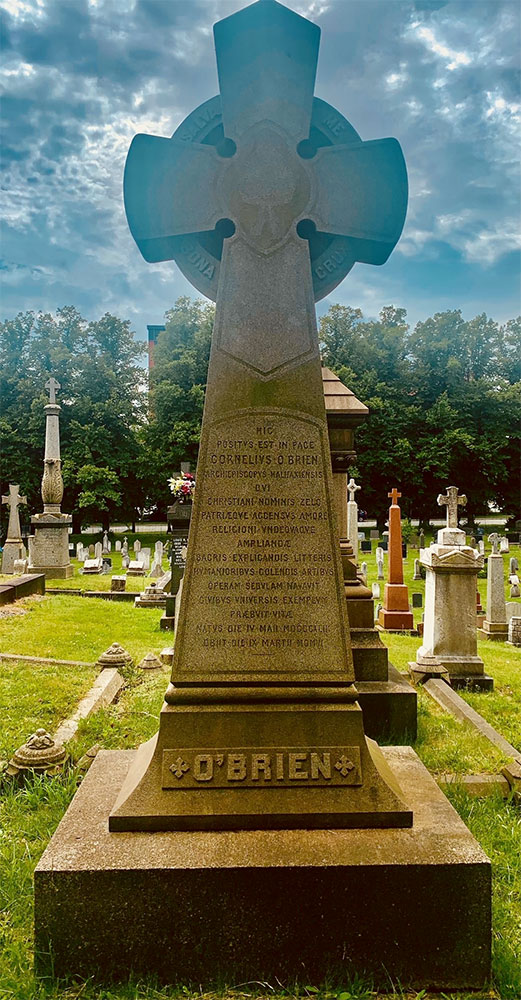 under O’Brien’s episcopacy. The site of the cemetery is near where William Walsh, the first Archbishop of Halifax, had his apostolic residence and where he passed away.
under O’Brien’s episcopacy. The site of the cemetery is near where William Walsh, the first Archbishop of Halifax, had his apostolic residence and where he passed away.
In 1891 Cornelius O’Brien oversaw the reconstruction of the Glebe House next to St. Mary’s Basilica,which at that point was almost 90 years old. Despite Archbishop O’Brien’s role in the renovations, he never lived in the new Glebe House as he established a new Apostolic Residence on Dresden Row during his episcopate.
Archbishop Cornelius O’Brien passed away on the 9th of March 1906 from a cerebral brain hemorrhage at the age of 62 with his adopted daughter Cornelia by his side. He was laid to rest at Halifax’s historic Holy Cross Cemetery. It was reported by multiple Halifax newspapers that his funeral procession had 25,000 attendees possibly the largest in Atlantic Canadian history at that time. Flags of many government offices including City Hall flew at half-mast and many businesses closed for the day. Tributes came from all over Canada including the leader of the official opposition Sir R.L. Borden. Even Ministers from local Protestant Churches expressed their sympathies. Archbishop Cornelius O’Brien’s episcopacy lasted 23 years which at the time was the longest tenure for a Bishop in the history of the Archdiocese.
References
Bekkers, Hannah. “History of the Glebe House: Script for a Potential Video Tour.” Archdiocese of Halifax Yarmouth, 2021. Cameron, John. Bishop John Cameron to Bishop Cornelius O’Brien, Halifax, NS, December 20th, 1893. Archdiocese of Halifax-Yarmouth Archives.
Hanington, J. Brian. Every Popish Person: The Story of Roman Catholicism in Nova Scotia and the Church of Halifax, 1604-1984. Archdiocese of Halifax, 1984, pg. 150-167.
Home News. “Archbishop Cornelius O’Brien.” Home News: A Weekly Journal for Absent Haligonians. Volume 2, Number 15. (March 17th, 1906). Archdiocese of Halifax-Yarmouth Archives.
Murphy, Terrance. “O’Brien, Cornelius.” Dictionary of Canadian Biography, Volume 3. (1994). http://www.biographi.ca/en/bio/o_brien_cornelius_13E.html
O’Brien, Cornelius. Political Letters (L.G. Power and W.S. Fielding/ Most Reverend Cornelius O’Brien Fonds. 1891-1893. Archdiocese of Halifax-Yarmouth Archives.
O’Brien, Archbishop Cornelius. Sir. John Thompson. Halifax, Canada: E.P. Meagher Limited, 1906. Archdiocese of Halifax-Yarmouth Archives.
O’Brien, Cornelius, “Blessing of the altar,” St. Agnes Church, September 1887. Archdiocese of Halifax-Yarmouth Archives.
Pope Leo XIII. Affari Vos. Encyclical Letter. Archdiocese of Halifax-Yarmouth Archives. 1897.
Rimmington, Gerald T. "The Founding of Universities in Nova Scotia." The Dalhousie Review (1966), pg. 333. https://dalspace.library.dal.ca/bitstream/handle/10222/59112/dalrev_vol46_iss3_pp319_337.pdf?sequence=1
Royal Society of Canada, Obituary of Archbishop Cornelius O’Brien in Transactions of the Royal Society of Canada, 1906, pg. VI-VII. Nova Scotia Public Archives.
“The Vision,” - a poem written by Archbishop Cornelius O’Brien in the Jubilee Number of The Critic, June 1887. Nova Scotia Public Archives.
Tupper, Charles. Canadian Secretary of State Charles Tupper to Archbishop Cornelius O’Brien, Halifax, NS, July 6th, 1896. Archdiocese of Halifax-Yarmouth Archives.
Waite, P.B. “Thompson, Sir John Sparrow David.” Dictionary of Canadian Biography, Volume 12. (1990). http://www.biographi.ca/en/bio/thompson_john_sparrow_david_12E.html
Archives Contact
Sharon Riel
Archivist - Halifax Office
Archdiocese of Halifax - Yarmouth
(902) 429-9800 ext 314




